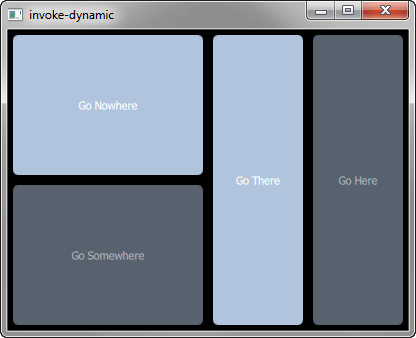
Invoke Example (Dynamic)
演示如何使用
<invoke>
element with generated nested state-machines, where the SCXML file is dynamically loaded. The
<invoke>
element is used to create an instance of an external service.
要运行范例从 Qt Creator ,打开 欢迎 模式,然后选择范例从 范例 。更多信息,拜访 构建和运行范例 .
在 statemachine.scxml , we specify a state machine with the name 方向 类型 http://www.w3.org/TR/scxml/ to invoke:
<scxml
xmlns="http://www.w3.org/2005/07/scxml"
version="1.0"
name="Directions"
initial="anyplace"
>
<state id="anyplace">
<transition event="goNowhere" target="nowhere"/>
<transition event="goSomewhere" target="somewhere"/>
<state id="nowhere"/>
<state id="somewhere">
<invoke type="http://www.w3.org/TR/scxml/">
<content>
<scxml name="anywhere" version="1.0">
<state id="here">
<transition event="goThere" target="there"/>
</state>
<state id="there">
<transition event="goHere" target="here"/>
</state>
</scxml>
</content>
</invoke>
</state>
</state>
</scxml>
We link against the Qt SCXML module by adding the following line to the invoke-dynamic.pro 文件:
QT += qml scxml
We dynamically create the state machine, as follows:
import QtScxml 5.8 MainView { stateMachine: directions.stateMachine StateMachineLoader { id: directions source: "qrc:///statemachine.scxml" }
文件: